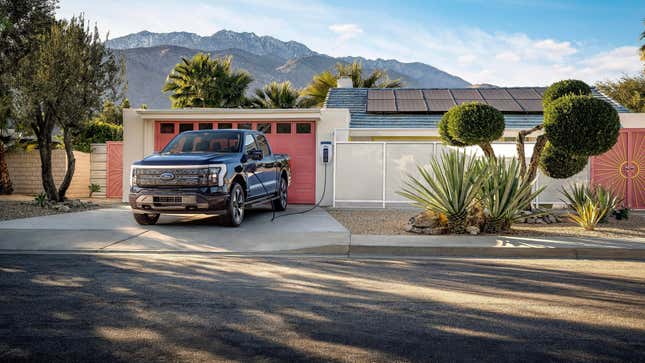
Ford is continuing its push into making vehicle-to-grid technology more mainstream. The automaker’s latest partnership is teaming up with a Southern California utility provider to pay EV owners a pretty nice amount for helping to bolster the grid.
This week Ford and Southern California Edison announced a new program called California Power Response that’s part of a larger plan to ease the load on the region’s power grid. Called Emergency Load Reduction Program, it will allow owners of Ford EVs to utilize V2G technology to give power back to the grid and get paid while doing it.
California Power Response will take advantage of Ford’s managed charging solution and is expected to provide a valuable source of load reduction in times of peak demand, which benefits the grid — and customers — while paving the way for future innovations in energy management and grid interaction. Electric vehicle drivers in Ford’s California Power Response program will earn $1 per kWh of energy reduced during peak grid events, creating financial incentives never before possible with gas-powered vehicles.
While that $1 per kWh might seem low, it’s not. A similar program done in Maryland with F-150 Lightning owners paid them $800 over three months to support the grid; this California program seems like a much better deal. That $1/kWh payout is more than the amount it typically costs to use a fast charger, which averages close to $0.50 per kWh. It’s also more than what it usually costs an EV owner to charge overnight at home. This depends on factors such as when and how you charge, of course. Some have calculated the costs of overnight home charging at $0.10 to $0.20 kWh per hour, assuming a battery pack of 40 to 80 kWh and 90-percent charging efficiency.
President and CEO of SCE Steve Powell said the future is now with two-way grids. “Ford’s support of the ELRP will show how EVs can make the grid more resilient. The ELRP incentivizes EV drivers to send power from their car battery to the grid when it is needed most,” Powell said in a statement.
The downside to all of this is the cost to utilize V2G tech, which ensures only the well-off will really be able to take advantage of it. As we’ve pointed out before, the total cost of the system, including charging and installation, can be as low as $10,000 or as high as $30,000 — the latter being nearly 43 percent of the cost of a compatible F-150 Lightning itself, as the tech requires the extended range battery that you can’t get for less than $70,000. Until many of these costs come down, only a select few will get to take in the spoils of giving power to the grid with their EVs.

